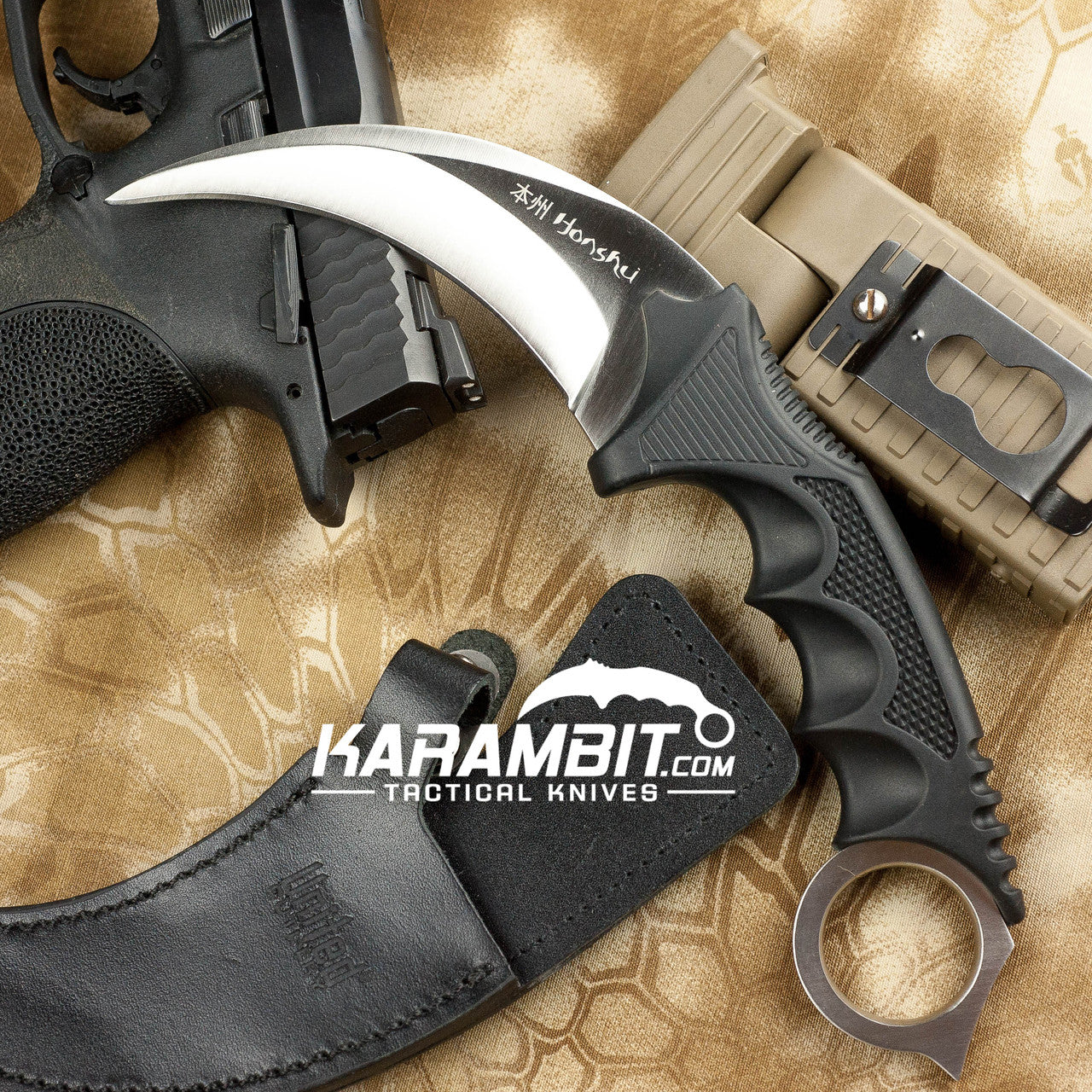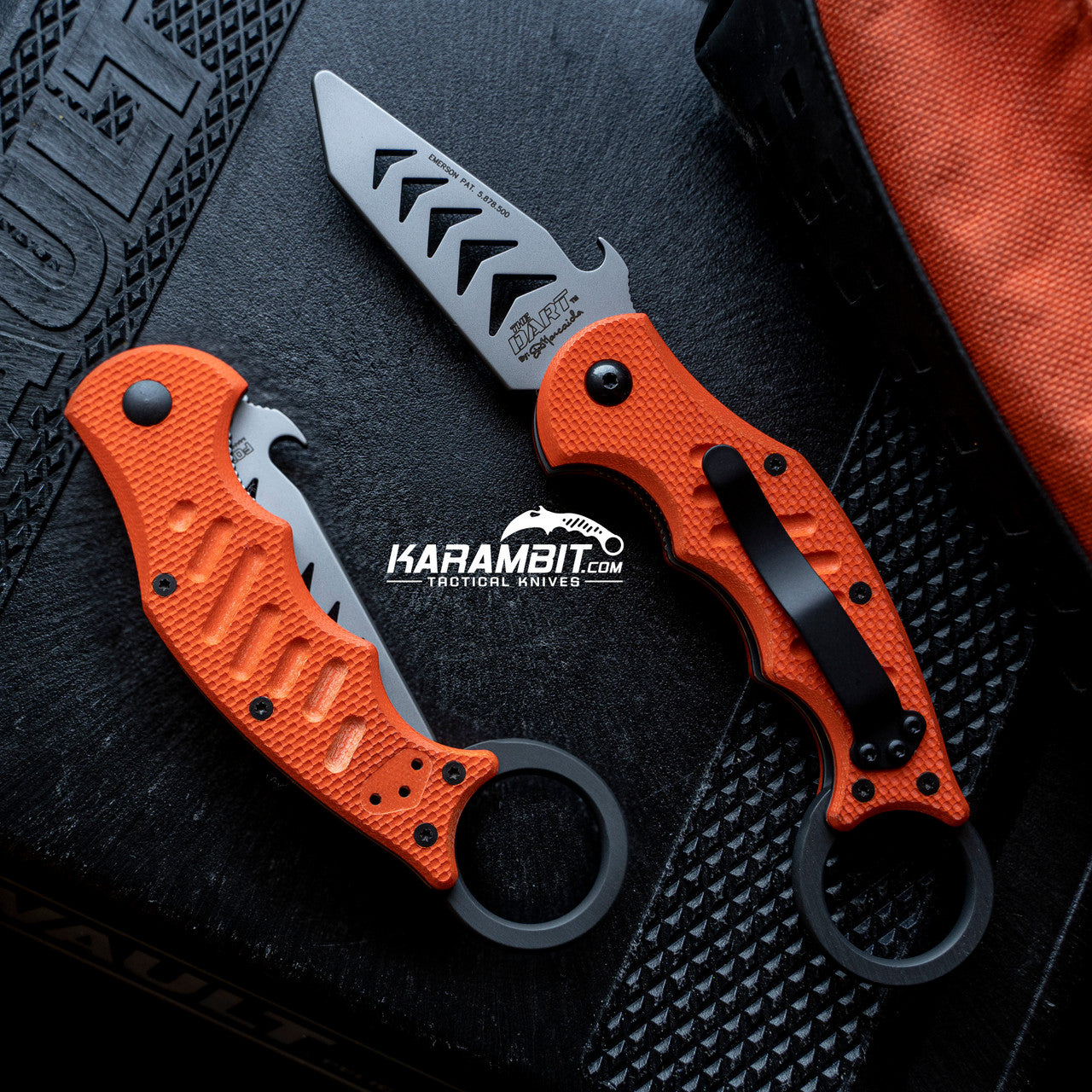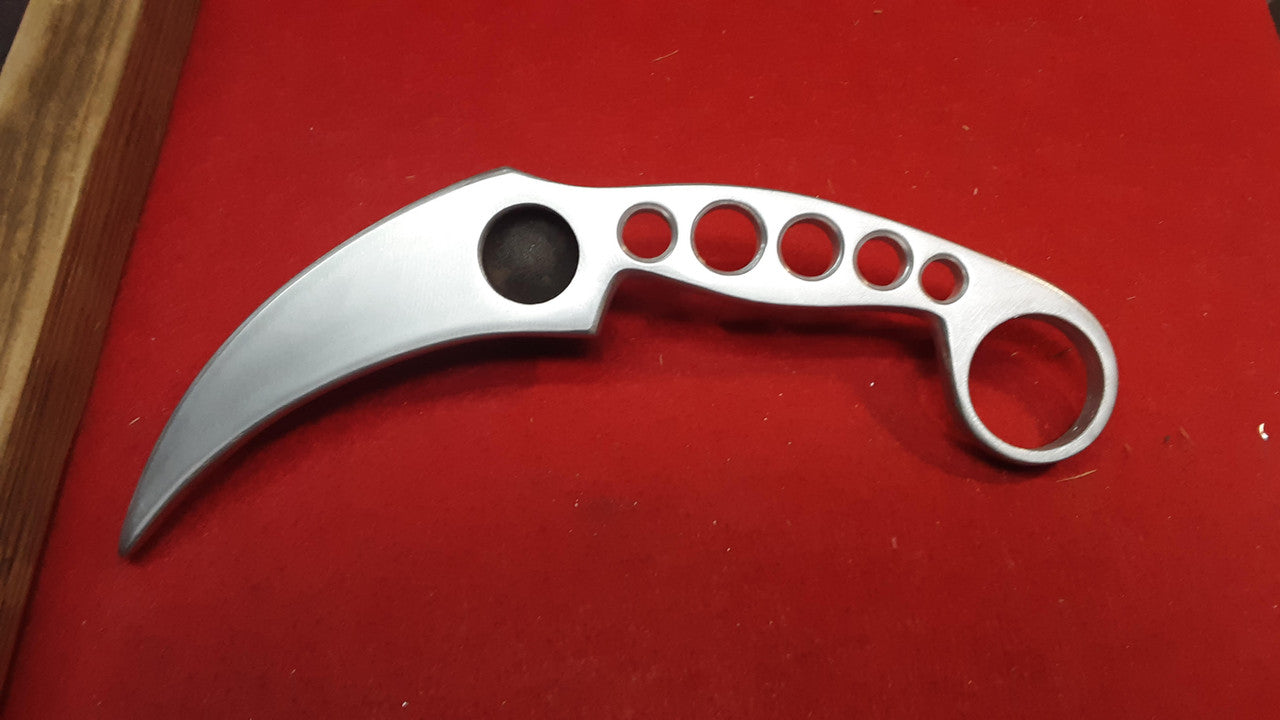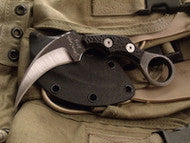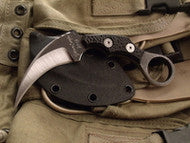You can look the world over without finding a blade that captures the imagination more completely than the karambit. Enthralling even those who know nothing about it, its savage appeal captivates even those outside of the SE Asian martial arts from which it originates. The aggressive lines, dark grace and brutal symmetry can shatter the resolve of the most hardened opponent while lending its user an unprecedented advantage. However, the reality is that the karambit is not a knife built for show or intimidation, but rather one designed for the dirty business of ending a violent encounter with speed, stealth, and fierce efficiency. Although this Southeast Asian blade’s origins are that of a humble farming tool, the modern incarnation of the karambit is built for one thing: killing in close quarters combat. It can easily double as a utility blade if circumstances call for it, though!
The karambit is NOT a dueling weapon. It’s meant to be concealed and deployed at close range, and you will be at a distinct disadvantage if you attempt to draw and use your karambit against a cognoscente attacker. One of the primary advantages of the karambit lies in its concealability. It’s small size, tight curves and multifaceted blade allows you to hide it until the time comes to make an unseen and decisive attack. If you should ever be confronted with a situation where you are forced to draw your karambit, your goal should be to resolve the encounter within 1-3 seconds. With more time, the opponent can calculate the situation and play against the karambit’s only weakness: range. However, When deployed in close quarters and paired with the element of surprise, nothing beats a well-made karambit in the hands of even a novice practitioner.
Another feature that makes the karambit such an effective weapon is its symmetry. The karambit is not a tool for cutting, but rather tearing. The ability of the karambit to severe blood vessels, muscle attachments, and hook into bone while leaving painful, rough, and jagged wounds is like the prize in the cereal box. The more traumatic the injury, the more response you will get from your opponent. There are many anecdotal stories about people being cut in blade play and not realizing it. A straight sharp implement produces a wound that will not likely be registered by the central nervous system in a high stress adrenaline based situation. Additionally, a “clean cut” does not bleed as much as a jagged one. A straight blade generally produces a wound with two symmetrical edges that immediately fold together to reduce bleeding. This is a pretty ingenious design of evolution, but one that the karambit and other asymmetrical blades have been designed to work against.
During WWI the “trench dagger” was almost as feared as the heavy machine gun. The trench dagger features a long stiletto style blade with 3 edges. It was practically a death sentence to be on the business end of this weapon. The wound would remain open to bleed due to the non-linear dimensions produced by the blade. If you were fortunate to survive the blood loss, you may have still died of infection because a non-symmetrical and jagged wound cannot be easily closed. It was these factors that led to the banning of the trench dagger by the Geneva Convention as “inhumane” in subsequent wars. It is into this lineage of brutal, highly effective and savage blades that the karambit falls.
One of the most incredible features of the karambit lies in its ability to be adapted in a variety of ways by a practitioner of any martial art. While a potent weapon when used solely in a rudimentary linear slashing motion,, the karambit also beautifully augments a good empty hand system. Many instructors have shown this weapon to practitioners of various styles who wished to learn. Rather than taking the time to introduce them to the stylistic points of Silat or Kali/Arnis/Eskrima, the best route for an instructor to take is to allow the student to show their art and then show them how to implement the karambit into their preexisting modus operandi. This adaptability is one of the key components of a good FMA practitioner. In the end, all martial arts are simply geometry, physics, and anatomy, and any weapon is just an extension of the hand. If a student already has the geometry and physics, then a crash course in anatomy combined with a few weapon specific concepts and a honing of the physical reflexes are the only missing links.
To learn more about the karambit, check out this karambit overview or review some of the frequently asked questions.
-Guro Jerome Teague, Applied Eskrima Balintawak Instructor
www.GuroJeromeTeague.com
* This is a guest post and may or may not accurately reflect the views of karambit.com and its staff. The views contained within reflect only the opinion of the author.

